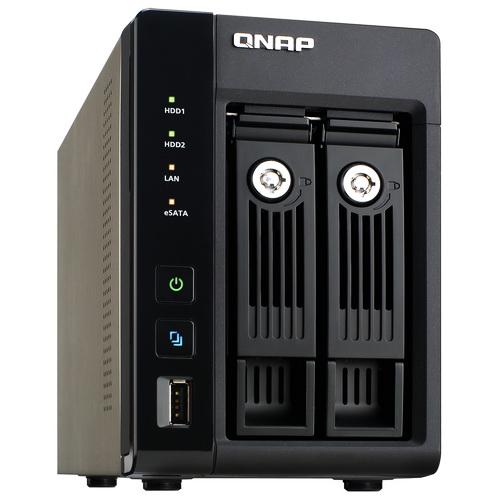INTRODUCTION

NAS units (or servers as i like to call them) are amongst the hottest network/storage related peripherals of our time (in terms of sales) which really makes sense since they combine extremely low electrical requirements with a very small size and in some occasions even a low price tag (at least entry level solutions do). Needless to say however that these little devices can't do every single thing an regular PC (or even HTPC) can do but the tasks that they were designed to do they do a lot better (due to lower resource demands) and that's what really counts in the long run. A couple of months ago on our test bench we had the latest TurboNAS TS-469 Pro by QNAP, an 4 bay NAS server with remarkable performance (largely thanks to the 2.13GHz Dual Core Atom processor) and countless features. Still since many people don't really need that many drive bays today we will be testing its smaller brother, the dual bay TurboNAS TS-269 Pro.
QNAP Systems, Inc. is a privately held company founded in 2004 and is dedicated to bringing world class NAS storage, professional NVR video surveillance, and network video players to consumer, small/medium business, and entry level enterprise market segments. QNAP leverages not only hardware design but also a growing core competency in software engineering that is precisely focused on bringing to market products that offer the highest available performance coupled with outstanding reliability, scalability, and ease of installation and use. QNAP is a multi-national company with headquarters in Taipei, Taiwan, and subsidiary offices in China and the United States.
As the second half of the product name suggests aside the difference in the number of available drive bays the TurboNAS TS-269 Pro is identical to its larger brother (TS-469 Pro) and so it also features the same Intel Atom 2.13GHz Dual Core processor, 1GB DDR3 SO-DIMM 1333MHz RAM (expandable to 3GB), 512MB of flash memory, dual Gigabit RJ-45 Ethernet ports, USB 3.0, SATA III (6Gb/s) connectivity and support for single, JBOD, RAID 0/1 modes. With such impressive specs i can't really help but to wonder if my up until today favorite dual-bay NAS server (the TurboNAS TS-259 Pro+) will still be my favorite tomorrow so I’m quite a bit anxious to see just how well it compares against the new TS-269 Pro (and I’m certain some of you are too).

 O-Sense
O-Sense







.png)

